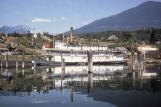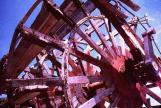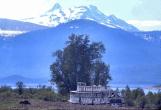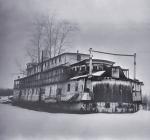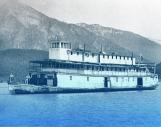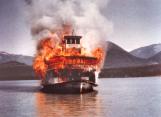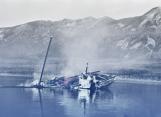1
The Minto didn't die quickly, as was the case with many of the sternwheelers. They were ravaged, lived in, and torn apart, but few were preserved. Some that were preserved, eventually sank or burned, leaving wooden 'bones' in the depths of a lake or strewn on a forgotten beach.
4
The fortunes of Nakusp along with several of the towns in the mid Arrow Lakes improved immensely in the 1950s as a result of the Whatshan power development. Electrification of these towns was a godsend for people in places like Burton and Edgewood, where gas lamps and private power plants had to do the job.A second industrial advancement began with the purchase of all the mills on the Arrow Lakes by a company called Canadian Cellulose. Following this move, a giant pulp mill was erected at Castlegar resulting in a corridor of forest running from Robson to the Big Bend being available for harvest. Employment, virtually guaranteed for three decades to the loggers in this drainage area, meant prosperity never before experienced.
9
Changes beyond anyone's imagination took place on the Arrow Lakes over the next ten years bringing about a transformation of its whole shoreline. The BC Government's decision to place a dam near Robson turning the Arrow Lakes into reservoir all but eliminated farmland from Castlegar to Revelstoke. Renata, Deer Park, Edgewood, Fauquier, Burton, Carrolls, Grahams, Arrow Park, Demars, St. Leon, Galena Bay, Beaton, Arrowhead and the Columbia Valley all were totally flooded or lost considerable land. Nakusp lost its waterfront but survived because the town was built on a bench.Halcyon Hot Springs had burned in 1955 but St. Leon was lost in a mysterious fire during Hydro clearing. Hundreds of houses were also burned after Hydro settled with the owners who had to now move to other towns.
Caught up in this transition was the hull of the SS Minto. On low ground, rotten and unsalvageable, John Nelson gave hydro permission to float her out into the bay to be set on fire.
Fred had just turned 90. Twenty years older than the Minto itself. Upon reading about the impending cremation of his favourite ship, he coaxed a friend to somehow get him to Galena Bay to witness the event and pay his last respects or maybe somehow prevent the final coup de grace.
